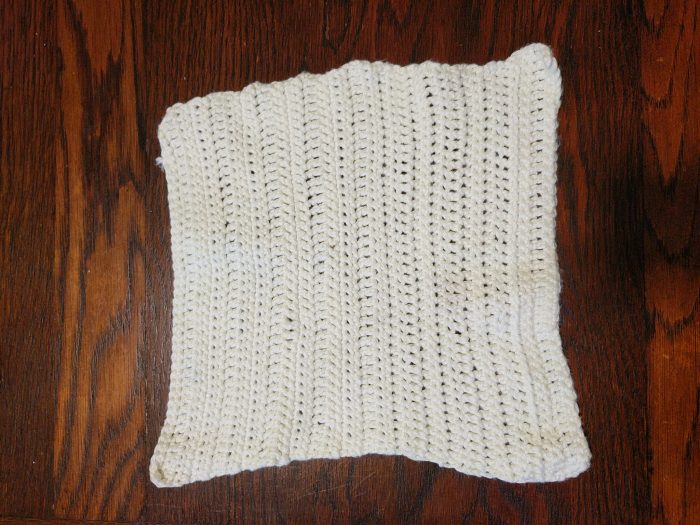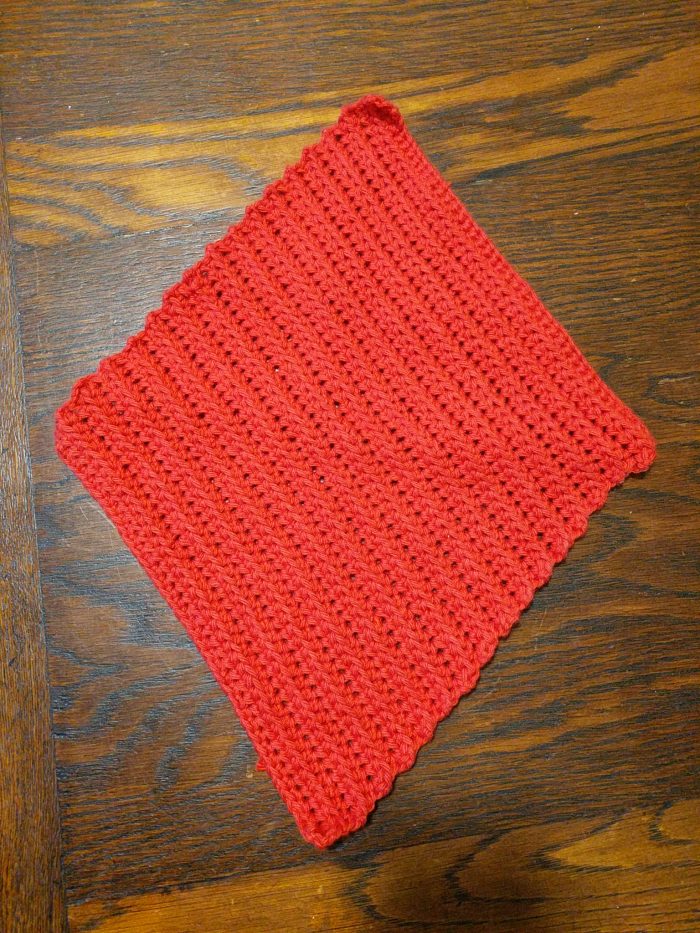They don’t make things like they used to! Buy a pack of cotton dishcloths, and hardly a decade has passed before they’re wearing into holes you could put a teacup through. This time around, I decided to make some myself. At least this way if they wear out in ten years, no one can be blamed for shoddy workmanship but me.
And after all, how hard can it be to crochet something square?

This first one, in deep cream or possibly pale yellow, I made by going back and forth between rows of Solo, Duo, and Trio. But I noticed ridges forming in places – along some parts of a row and not others. A close inspection followed by a bit of experimentation revealed what was causing it.
Every crochet stitch has three strands to it: the front loop, the back loop, and the back bump. Or possibly the top loop, bottom loop, and back ridge loop. Or possibly…
Look, there’s two bits (front and top) that make a > sign, and a short dash round the back. Just to add to your confusion, the top of the > and the dash can combine to look like a < sign. And the front of a stitch is at the back as soon as you start the next row.
If you put your hook under the top of the > you get something a bit loopy and lacy. If you put your hook under the top of the > and the dash, you get a fairly straightforward sort of stitch. If, however, you put your hook under the top and bottom of the > and leave the dash out of it, you get a ridge at the back. (Probably the dash, sulking.)
So I decided for my second dishcloth (red) I would use just Duo stitches, but alternate rows of hooking under the top of the > and the dash (i.e. the <), with rows of hooking under both parts of the >, leaving the dash to sulk. And it worked! One side ridgy, the other side not. But as the rows grew, I noticed something else happening which I could not account for.

It started out just looking a bit skewed, then it became a positive parallelogram, and finally it wound up as a rhombus. And I have no idea why. I didn’t do anything different at the beginning or end of each row, except for which parts of the stitch I hooked into – same as the rest of the row.
Of course, this makes no real difference to its functionality as a dishcloth. But I still find my mind occasionally exercised by the Mystery of the Red Rhombus.
So if any of you have the clew which will unravel this mystery, do let me know. It may well come in useful in a decade’s time when I need to crochet a couple more.
